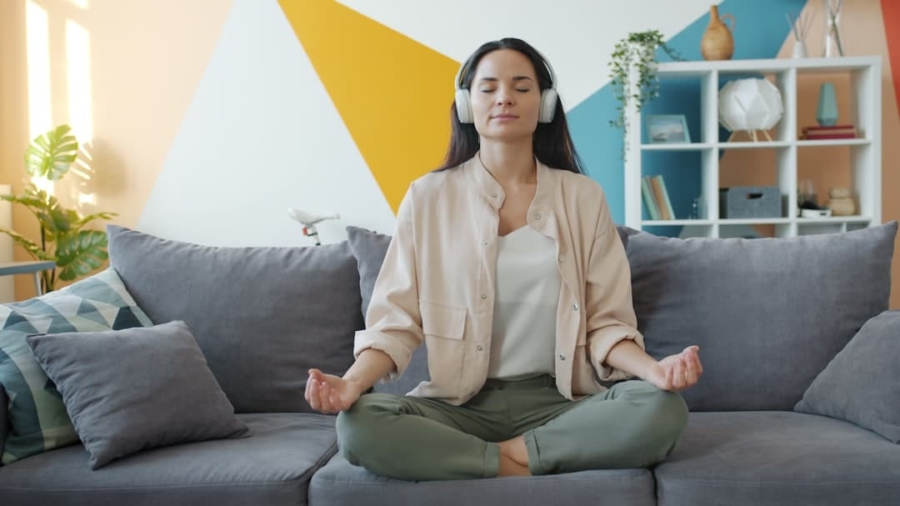In recent years, the proliferation of digital devices has transformed the way we communicate, work, and entertain ourselves. While technology has undoubtedly brought numerous benefits, it has also raised concerns about its impact on mental health. Research indicates that excessive screen time can lead to a range of psychological issues, including anxiety, depression, and sleep disturbances.
For instance, a study published in the journal “Preventive Medicine Reports” found that adolescents who spent more than three hours a day on screens were significantly more likely to report feelings of sadness and hopelessness compared to their peers who engaged in less screen time. This correlation suggests that the nature of our interactions with screens—whether through social media, gaming, or passive consumption of content—can profoundly affect our emotional well-being. Moreover, the content consumed during screen time plays a crucial role in shaping mental health outcomes.
Engaging with negative or distressing content can exacerbate feelings of anxiety and depression. For example, scrolling through social media feeds filled with curated images of others’ seemingly perfect lives can lead to unhealthy comparisons and feelings of inadequacy. The constant barrage of information can also contribute to cognitive overload, making it difficult for individuals to process their thoughts and emotions effectively.
As a result, understanding the nuanced relationship between screen time and mental health is essential for developing strategies to mitigate its adverse effects.
Key Takeaways
- Excessive screen time can have a negative impact on mental health, leading to increased stress, anxiety, and depression.
- Setting boundaries and limits for screen time is essential for maintaining a healthy balance and reducing the negative effects on mental well-being.
- Creating a digital detox plan can help individuals take intentional breaks from screens and re-engage with the physical world and real-life experiences.
- Finding alternative activities to replace screen time, such as exercise, hobbies, and socializing, can improve mental health and overall well-being.
- Managing FOMO and social media addiction is important for reducing comparison and anxiety, and practicing mindfulness and being present can help individuals focus on the present moment and reduce stress.
- Seeking support and accountability from friends and family can help individuals stay on track with their digital detox and screen time reduction goals.
- Reflecting on the benefits of digital detox and reduced screen time, such as improved mental health, better sleep, and increased productivity, can motivate individuals to continue prioritizing their well-being over excessive screen use.
Setting Boundaries and Limits for Screen Time
Establishing clear boundaries around screen time is a critical step in promoting mental well-being. One effective approach is to create a structured schedule that delineates specific times for device use. For instance, individuals might designate certain hours for work-related tasks while reserving evenings for leisure activities that do not involve screens.
This intentional separation can help individuals regain control over their time and reduce the likelihood of mindless scrolling or binge-watching. Additionally, utilizing tools such as screen time tracking apps can provide valuable insights into usage patterns, enabling users to identify areas where they may need to cut back. Another important aspect of setting boundaries is communicating these limits with family members or roommates.
By discussing screen time expectations openly, individuals can foster a supportive environment that encourages accountability. For example, families might agree to implement “tech-free” zones during meals or designated family time, allowing for more meaningful interactions without the distraction of devices. This collaborative approach not only reinforces personal boundaries but also strengthens relationships by prioritizing quality time spent together.
Creating a Digital Detox Plan

A digital detox plan serves as a roadmap for individuals seeking to reduce their screen time and reconnect with the world around them. The first step in crafting such a plan is to assess current screen usage habits.
For instance, some individuals may find themselves reaching for their phones out of habit during moments of boredom or stress. By recognizing these patterns, individuals can develop strategies to address them proactively. Once awareness is established, the next phase involves setting realistic goals for reducing screen time.
These goals should be specific, measurable, achievable, relevant, and time-bound (SMART). For example, an individual might aim to reduce their daily screen time by one hour over the course of a month. To support this goal, they could implement gradual changes, such as replacing one hour of screen time with an alternative activity each week.
Additionally, incorporating regular check-ins to evaluate progress can help maintain motivation and accountability throughout the detox process.
Finding Alternative Activities to Replace Screen Time
Identifying alternative activities to replace screen time is essential for a successful digital detox. Engaging in hobbies that promote creativity and physical activity can provide fulfilling substitutes for mindless scrolling or binge-watching. For instance, individuals might explore artistic pursuits such as painting, drawing, or crafting, which not only serve as creative outlets but also foster mindfulness and relaxation.
Similarly, outdoor activities like hiking, biking, or gardening can enhance physical health while providing a refreshing break from screens. Social interactions also play a vital role in reducing reliance on digital devices. Organizing game nights with friends or participating in community events can create opportunities for meaningful connections without the interference of technology.
Additionally, reading books or joining a book club can stimulate intellectual engagement while offering an escape from the digital realm. By diversifying leisure activities and prioritizing face-to-face interactions, individuals can cultivate a more balanced lifestyle that promotes overall well-being.
Managing FOMO (Fear of Missing Out) and Social Media Addiction
The phenomenon of FOMO—anxiety stemming from the belief that others are having rewarding experiences that one is missing out on—has been exacerbated by social media platforms. The curated nature of online content often leads individuals to feel inadequate or disconnected from their peers. To combat FOMO, it is crucial to recognize that social media often presents an unrealistic portrayal of life.
Understanding that others’ highlight reels do not reflect everyday realities can help mitigate feelings of inadequacy. Additionally, implementing strategies to limit exposure to social media can be beneficial in managing FOMO. This might involve unfollowing accounts that trigger negative emotions or setting specific times for checking social media rather than allowing it to intrude throughout the day.
Engaging in offline activities that foster genuine connections can also help alleviate feelings of missing out. By focusing on building meaningful relationships in real life rather than through screens, individuals can cultivate a sense of belonging that transcends the digital landscape.
Practicing Mindfulness and Being Present

Mindfulness practices encourage individuals to focus on the present moment and cultivate awareness of their thoughts and feelings without judgment. Incorporating mindfulness techniques into daily routines can significantly enhance mental well-being while reducing reliance on screens for distraction. Simple practices such as deep breathing exercises or guided meditation can help individuals reconnect with their inner selves and foster a sense of calm amidst the chaos of modern life.
Being present in everyday activities is another powerful way to practice mindfulness. Whether it’s savoring a meal without distractions or taking a leisurely walk while appreciating nature, these moments allow individuals to engage fully with their surroundings. By consciously choosing to be present rather than reaching for a device during idle moments, individuals can cultivate a deeper appreciation for life’s simple pleasures and reduce the urge to escape into screens.
Seeking Support and Accountability from Friends and Family
Embarking on a digital detox journey can be challenging, but seeking support from friends and family can significantly enhance motivation and accountability. Sharing intentions with loved ones creates an environment of encouragement where individuals feel empowered to stick to their goals. For instance, forming a support group with friends who are also interested in reducing screen time can provide opportunities for shared experiences and mutual encouragement.
Additionally, involving family members in the detox process fosters collective growth and understanding. Families can establish tech-free zones or designated times for engaging in activities together without screens. This collaborative effort not only strengthens relationships but also reinforces the importance of prioritizing quality time over digital distractions.
By leaning on each other for support, individuals are more likely to stay committed to their goals and experience the benefits of reduced screen time.
Reflecting on the Benefits of Digital Detox and Reduced Screen Time
As individuals progress through their digital detox journey, reflecting on the benefits experienced can reinforce positive changes and motivate continued efforts. Many people report improved mental clarity, enhanced mood stability, and increased productivity after reducing screen time. For instance, individuals may find themselves more focused at work or school without the constant interruptions of notifications and distractions from devices.
Moreover, reduced screen time often leads to deeper connections with others and a greater appreciation for real-life experiences. Individuals may discover newfound hobbies or interests that bring joy and fulfillment outside the digital realm. By taking the time to reflect on these positive outcomes, individuals can cultivate a sense of gratitude for their efforts and remain committed to maintaining healthier relationships with technology moving forward.
In today’s fast-paced digital world, managing screen time and implementing a digital detox can be challenging yet essential for maintaining mental well-being. For those looking to explore innovative ways to balance technology use, the article on conversational commerce offers insights into how technology can be used more mindfully. By understanding the role of conversational commerce, individuals can make more informed decisions about their digital interactions, potentially reducing unnecessary screen time and fostering a healthier relationship with technology.
FAQs
What is digital detox?
Digital detox refers to the period of time during which a person refrains from using electronic devices such as smartphones, computers, and social media platforms. It is a way to reduce stress, increase mindfulness, and focus on real-life social interactions.
Why is it important to manage screen time effectively?
Managing screen time effectively is important for maintaining a healthy balance between technology use and other activities. Excessive screen time has been linked to various health issues such as eye strain, poor posture, sleep disturbances, and decreased physical activity.
What are some tips for managing digital detox and screen time effectively?
Some tips for managing digital detox and screen time effectively include setting specific time limits for device use, scheduling regular breaks from screens, engaging in offline activities such as exercise and hobbies, and creating tech-free zones in the home.
What are the benefits of digital detox and managing screen time effectively?
The benefits of digital detox and managing screen time effectively include improved mental well-being, better sleep quality, increased productivity, enhanced focus and concentration, and stronger real-life social connections.
How can digital detox and screen time management positively impact children and teenagers?
For children and teenagers, digital detox and effective screen time management can lead to improved academic performance, better social skills, reduced risk of cyberbullying, and a healthier relationship with technology.

